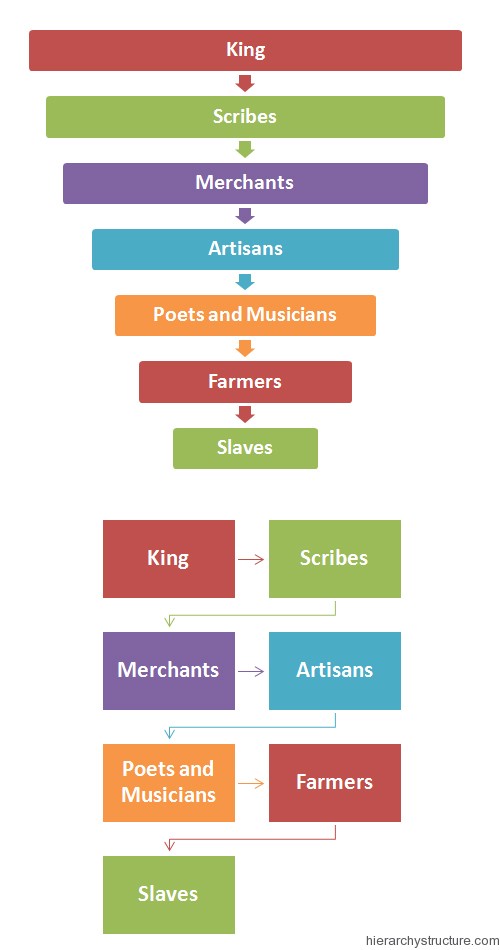Ancient Assyria was a kingdom that was acquired by the people of Semitic race and was located in the northern part of Mesopotamia which we now know as northern Iraq. The Assyrian kingdom was on the western bank of upper Tigris River. The ancient Assyrian kingdom originally evolved as the minor Akkadian reign around late 24th century BC and early 25th century BC. The people living in Assyria were mainly the tribal people.
The ancient Assyrians were among the world’s few earliest civilizations. These people contributed to world in many significant ways, as they were the inventors of the first written language in the world and were also involved in certain mathematical, architectural Hierarchy and artistic innovations. Like many other civilizations and kingdoms the people here were also divided in social structure hierarchies. Following are the major levels of ancient Assyrian hierarchy ranging from the topmost to bottom most levels:

- Slaves
- Farmers
- Poets and Musicians
- Artisans
- Merchants
- Scribes
- King
King
On the top of the ancient Assyrian hierarchy lied the Assyrian King. The kings in Assyria were involved in developing the infrastructure of the city with great monuments and providing protection to people of their kingdom by maintaining a strong military force.
Scribes
Below the king lied the second class of hierarchy that was comprised by Scribes. The scribes were considered as the scholars of the kingdom and their major responsibilities included documentation and written work. They were responsible for writing documents, books and maintaining the judicial, historical and business records in the kingdom.
Merchants
At the third level of ancient Assyrian hierarchy were the merchants. These merchants were responsible for performing trading job for the king. They bartered, sold and traded many material goods in return for other materialistic items. Assyria was famous for the trading of textile, precious metals, wine, bricks and carnelians etc.
Assyria was a region where natural resources were not in abundance. Hence merchants played a significant role in society by trading with the nearby countries to get the resources that they need by bartering the things that they had.
Artisans
Assyria was a state where due importance was given to craftsmanship. Hence artisans were given higher status in society as compared to slaves and farmers. The artisans were responsible for developing material goods like clothing items, pots etc.
Poets and Musicians
Assyrian culture also encouraged music and poetry. Hence professionals involved in art forms were also respected in the society. These people used instruments like Lyres, Lutes, Reed pipes, Drums and lutes etc.
Farmers
The Assyrians were among the few people in the world who invented wine and beer etc. So farmers apart from farming the regular food products also indulged themselves in developing some different food items.
Slaves
The last level in the ancient Assyrian hierarchy was given to slaves. These were responsible for serving the higher ranks aristocratic classes like Kings, Scribes, and Priests etc. Slaves possessed no rights of their own. They were used in public buildings, homes of their masters and temples.
Know more about Assyrian Church Hierarchy Click Here
